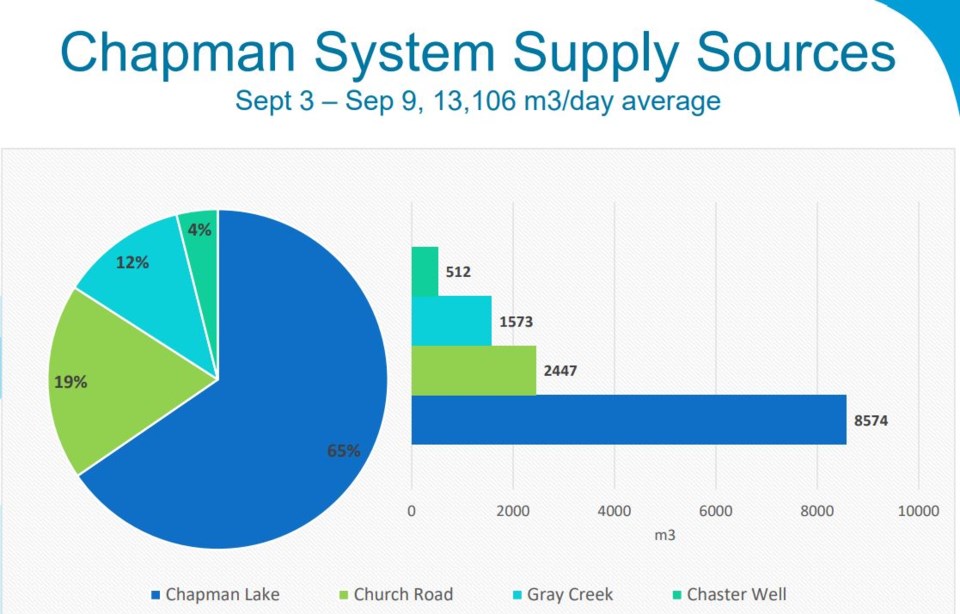Moisture conditions in the Chapman Lake watershed and lake water levels are both higher than at this time last year, according to the Sunshine Coast Regional District’s (SCRD) Sept. 14 water update.
Utilities Superintendent Codi Abbott reported at the regional district’s committee of the whole meeting that recent small-volume precipitation events and rains in the early spring have helped hydrate the general area. The result has been less of the water the SCRD releases from the lake for environmental flow needs (EFN) being absorbed en route downstream. The regional district recorded only one recent date with such a water loss, which measured at about 14 litres per second. Abbott contrasted that to multiple dates in 2022, when up to 500 litres per second was being lost and additional lake water had to be released to meet EFN requirements.
“Last year, we were losing 10 to 15 centimetres per day of lake level. This year, we are losing about five (per day) at Chapman and about three (per day) at Edwards," Abbott stated. Recent rains have temporarily “plateaued” but not increased water levels in Chapman, she noted.
During the first week of September, the SCRD started taking water from Edwards Lake. The SCRD also started use of three of its Chapman Lake siphons after Stage 4 restrictions were put in place on Sept. 8. Abbott said at that point, that lake was 240 cm below the dam. She explained the dam outlet cannot control the outflow of lake water, needed to manage the EFN, once that level drops below negative 270 centimetres.
“That was one reason for calling Stage 4,” she said, “as we want to ensure we have our ducks in a row before minus 270."
“The way we are operating now is we will release water from Chapman for the fish and from Edward for people,” Abbott stated.
Risks at the treatment plant
Another consideration related to water restrictions is the capacity of the Chapman Water Treatment Plant. That facility is designed to operate at a flow rate of 85 litres per second. Under extreme conditions, as happened during the 2022 State of Local Emergency (SOLE), Abbott said it can be run “slower," but with a risk of damage to equipment.
That risk became reality last year and meant $35,000 worth of repairs were required and the operational loss of one plant pump for four months. She indicated managing the flows to the facility and incoming water pressures from the variety of Chapman water sources is “a challenge” for staff and stressed that “if we operate the system more conservatively, we can avoid damage to our infrastructure.”
Abbott said, “The idea would be to operate the system such that we don’t have an ECO [Emergency Operations Centre] and we don’t have a SOLE…those have bigger impacts for the SCRD, the community and the [water] supply in general.”
Supply and demand numbers
The report detailed that during the first week of September, 65 per cent of the Chapman system supply came from the lake, 19 per cent from Church Road Well Field, 12 per cent from Gray Creek and 4 per cent from Chaster well.
On the demand side, she reported the declaration Stage 4 led to an average daily reduction in Chapman system water use of about 2,000 cubic metres. Daily usages went from about 13,000 to 11,000 cubic metres per day. She said the volume of water saved is being retained in Chapman Lake.



